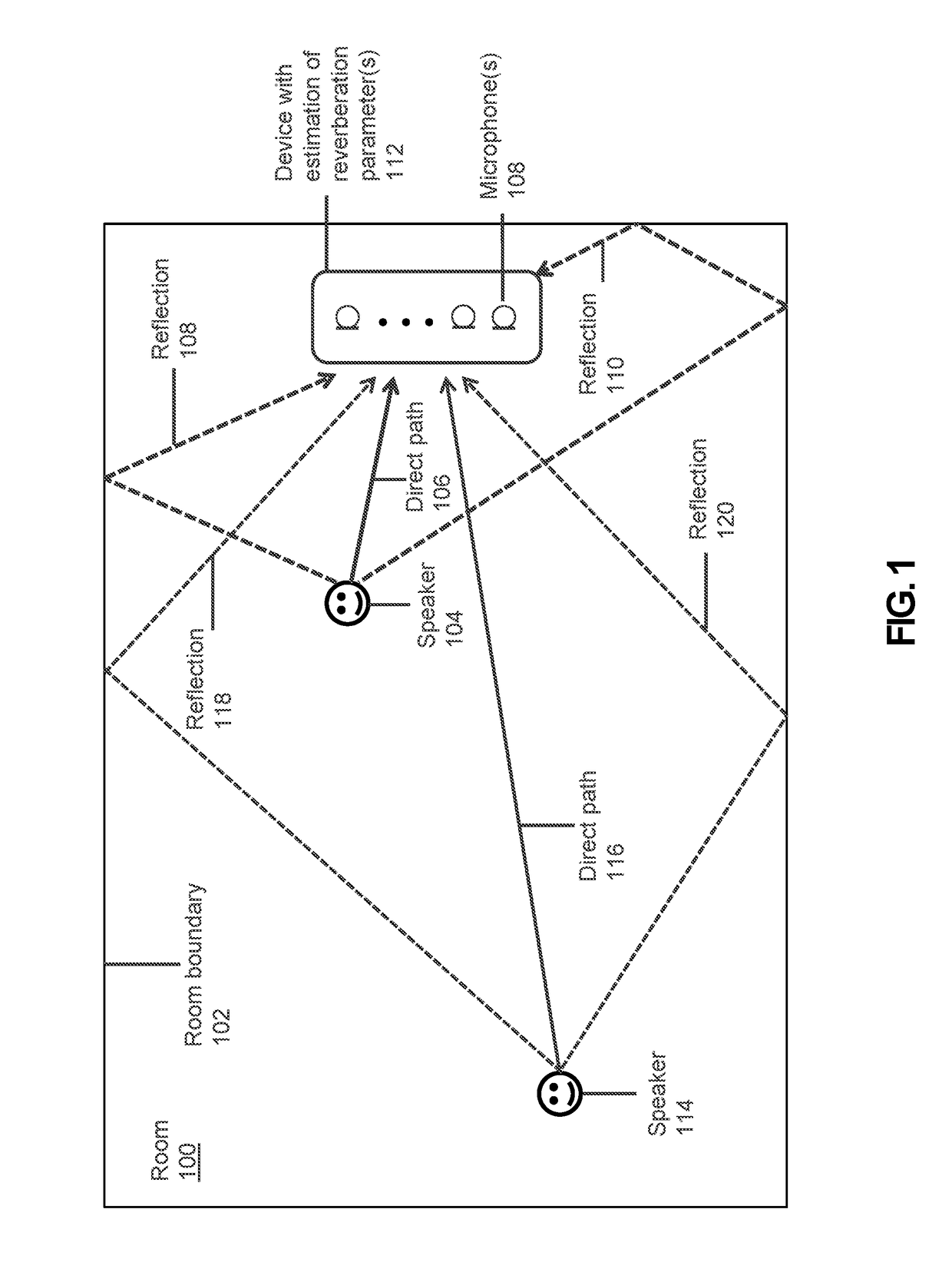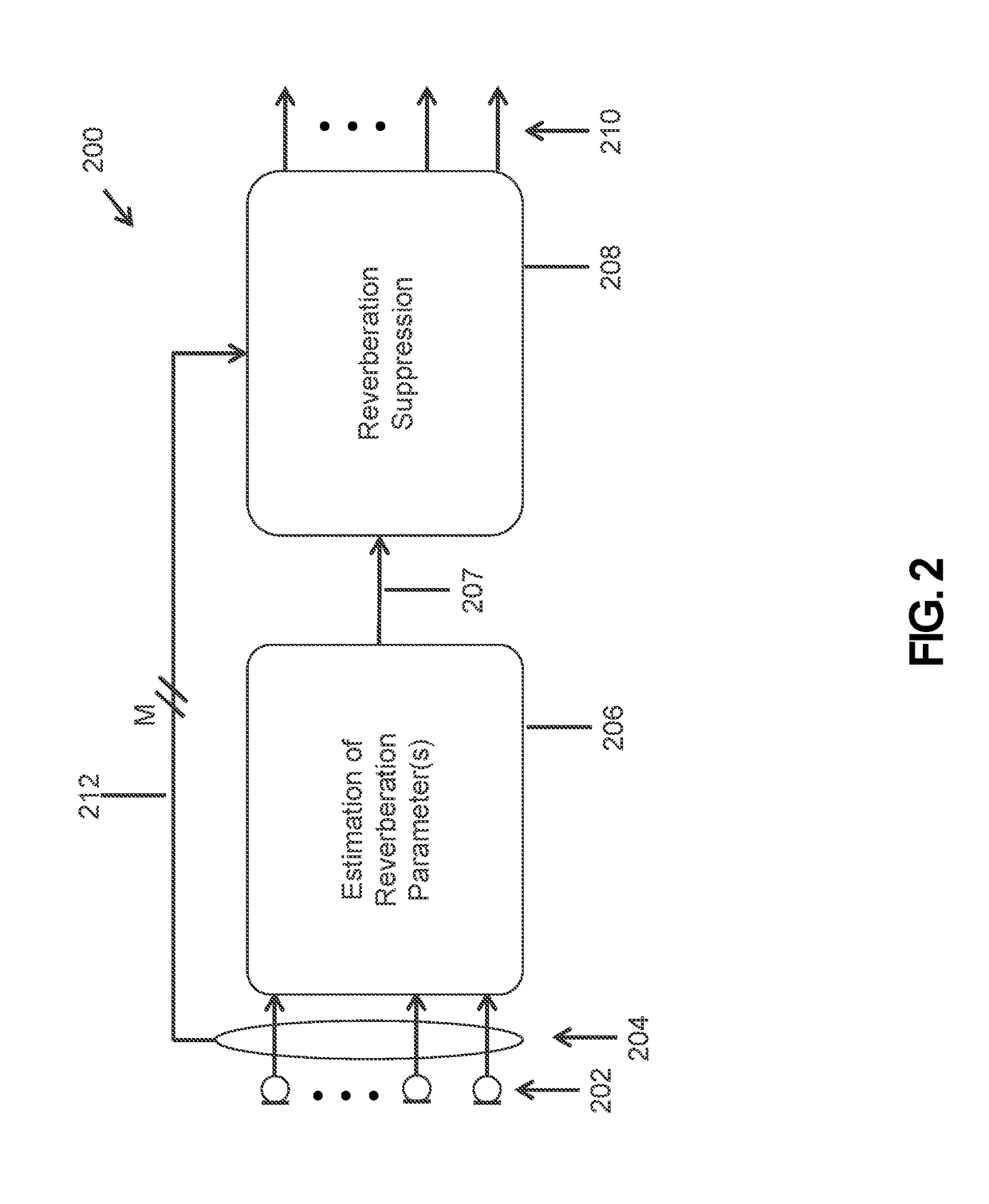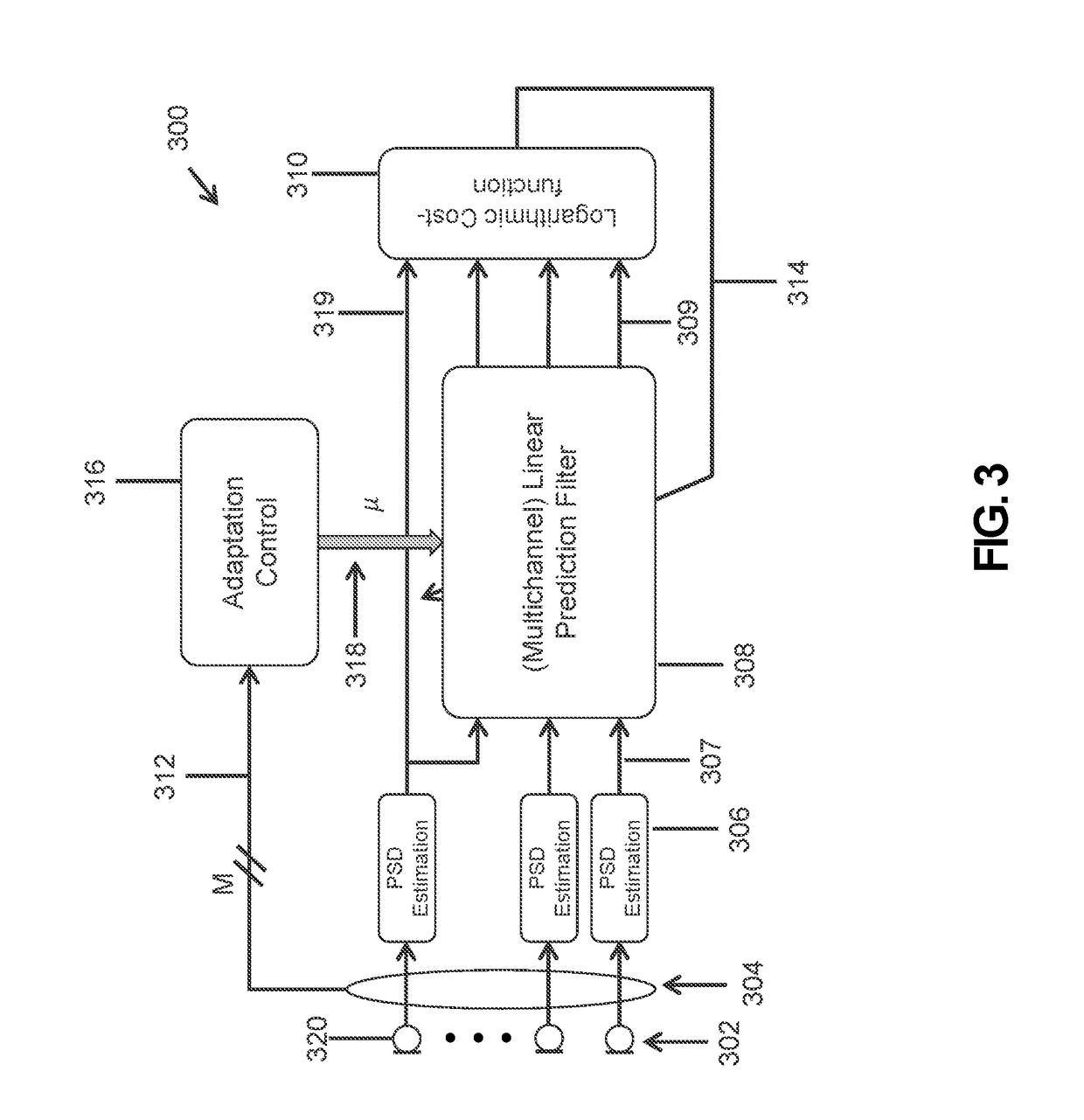Spectral Estimation Of Room Acoustic Parameters
a spectral estimation and room technology, applied in the direction of stereophonic circuit arrangements, instruments, electrical transducers, etc., can solve problems such as speech recognition applications, and achieve the effect of improving speech quality and improving accuracy
- Summary
- Abstract
- Description
- Claims
- Application Information
AI Technical Summary
Benefits of technology
Problems solved by technology
Method used
Image
Examples
example implementation
6. Features and Example Implementation
[0091]The following are advantageous features of embodiments of the described invention:[0092]Using a parametric (multichannel) prediction principle to predict the Late Reverberation PSD.[0093]Minimizing the Mean-Squared Log-Error to find the predictor parameters.[0094]Using an IIR-Predictor according to the LRSV Estimate proposed by Habets.[0095]Using the RPE principle to compute the gradient of the IIR-Predictor.[0096]Using a parametric FIR-Predictor to estimate the decay parameter which can be translated to an estimate of the reverberation time T60.[0097]When using the FIR-predictor, dynamically change the length of the filter in the range L∈[2, Lmax] taps based on the duration of the decay observed in the microphone signals.[0098]Making the decay parameter G estimation robust to outliers in the decaying parts of the microphone spectrum.
[0099]FIG. 8 is a flow chart 800 illustrating an example process and system for estimating one or more reve...
PUM
 Login to View More
Login to View More Abstract
Description
Claims
Application Information
 Login to View More
Login to View More - R&D
- Intellectual Property
- Life Sciences
- Materials
- Tech Scout
- Unparalleled Data Quality
- Higher Quality Content
- 60% Fewer Hallucinations
Browse by: Latest US Patents, China's latest patents, Technical Efficacy Thesaurus, Application Domain, Technology Topic, Popular Technical Reports.
© 2025 PatSnap. All rights reserved.Legal|Privacy policy|Modern Slavery Act Transparency Statement|Sitemap|About US| Contact US: help@patsnap.com



